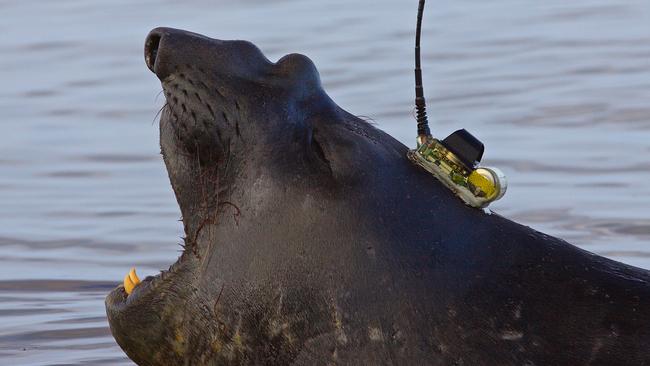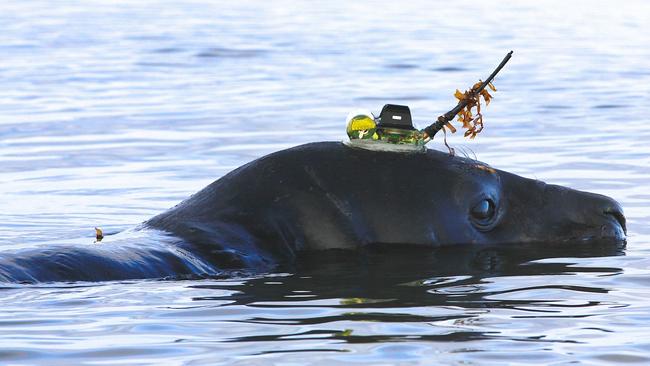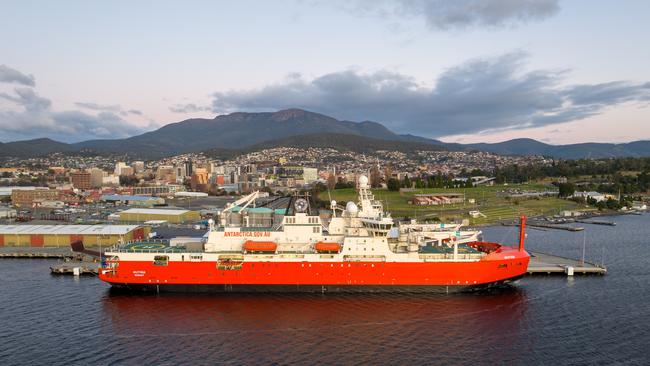Deep-diving seals help scientists uncover icy depths of East Antarctic
New research tracking seals in East Antarctica has uncovered the true icy depths of the ocean which is 25 per cent deeper than scientists thought.

Tasmania
Don't miss out on the headlines from Tasmania. Followed categories will be added to My News.
Seals diving into the icy depths of East Antarctica over the past 20 years have helped scientists uncover how deep the ocean is compared to previous estimates.
Using satellite tracking devices, scientists have tagged, measured and analysed more than 500,000 individual seal dives beneath the East Antarctic continental shelf since 2004 which has revealed the ocean is deeper than they originally thought.
Research led by Sydney Institute of Marine Science and Integrated Marine Observing System scientist Dr Clive McMahon, who also leads the ARC Australian Centre for Excellence in Antarctic Science (ACEAS) elephant seal tagging program out of the Institute of Marine and Antarctic Studies (IMAS) said deep-diving seals like Weddell and elephant seals are helping map the ocean floor.
“Given the remote and inhospitable nature of Antarctica and the surrounding Southern
Ocean, only a small part of the Antarctic continental shelf was surveyed by ships in the past,
so the information available about this area is sparse,” he said.
ACEAS and IMAS Professor Mark Hindell who also co-authored the research paper said researching seal dives was vital to improve understanding of oceanographic processes that affect Antarctica’s role in global climate.

“We found in some regions that more than 25 per cent of previous estimates of the ocean
depths were wrong,” he said.
“We only know this now because the seals were diving hundreds of metres below those
depths. In the most extreme case, they were diving 1000m deeper than what we thought
was the ‘ocean floor’.”
The research also confirmed the findings from Australia’s icebreaker RSV Nuyina which used a multi-beam echo sounder survey which found a deep canyon called the Mirounga-Nuyina Canyon.

The deep-diving seal data found new underwater features including the deep canyon near the Vanderford Glacier and troughs off the Shackleton Ice Shelf and Underwood Glacier.
“The observations we collect from the seals help us better understand the shape of the
ocean floor, especially where there are channels for warm water to access ice shelf cavities,” Dr McMahon said.
“This knowledge is essential for scientists trying to measure ice sheet melt rates.”
Scientists are eager to understand the East Antarctic ice sheet because it locks in more than 52m of global sea rise level.
“As the climate changes, greater intrusions of warm water into the shelf cavities are more
likely,” Professor Hindell said.
“So if we can find out exactly where the water accesses the underside of the shelves, we’ll
also be much better placed to quantify melt rates, freshwater input into the ocean and other
variables that affect our future oceans and climate.”
tia.ewen@news.com.au




